
As long as they are protected, wild spaces are an infinite source of stories fuelled by wonder and curiosity. On any given drive, The Mara Triangle is a perfect example of this. One of these stories is Risasi and her undeniable will to survive — and, it appears, her son does too, as we spotted him in the early hours of the morning. Within minutes of leaving the lodge a small male cheetah came walking gracefully towards us — it was him. The first visual sighting we had of Risasi’s five cubs was in July 2022 so we estimate that he, the lone surviving cub, is now one year and eight months old.
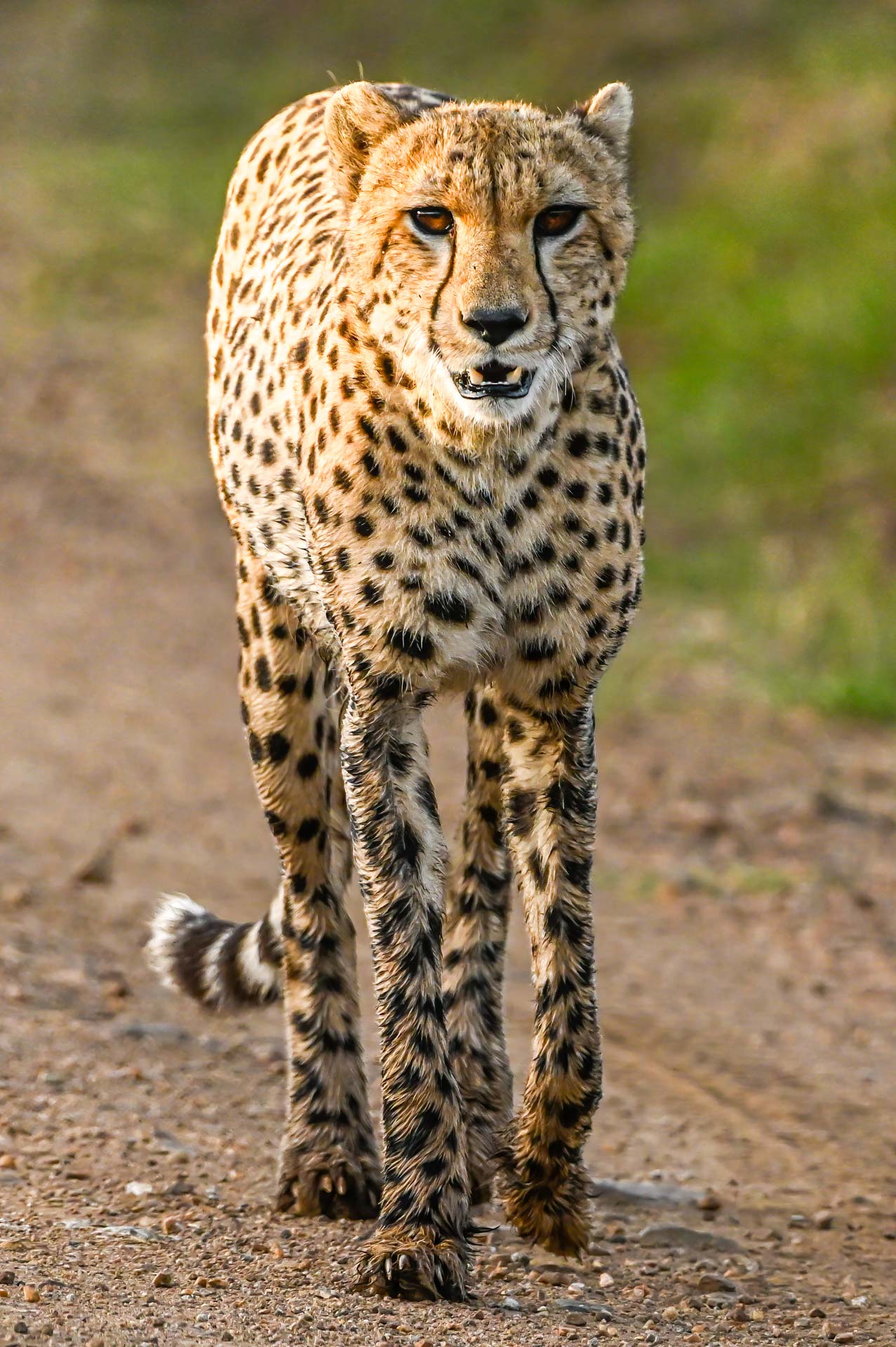

He was on the move and constantly scouting the landscape. As we watched, he veered off the road and towards an acacia tree. With great agility he lept into the tree and, for only a few moments, looked around. Cheetahs have excellent vision and sharp focus; their peripheral vision is nearly 210 degrees and with great depth perception. One thing you'll notice with this cub is the unique adaptability cheetahs have in their semi-retractable claws. These claws act like running spikes and give the cat speed and traction during high-speed chases and allow for sharp turns and bursts of acceleration.
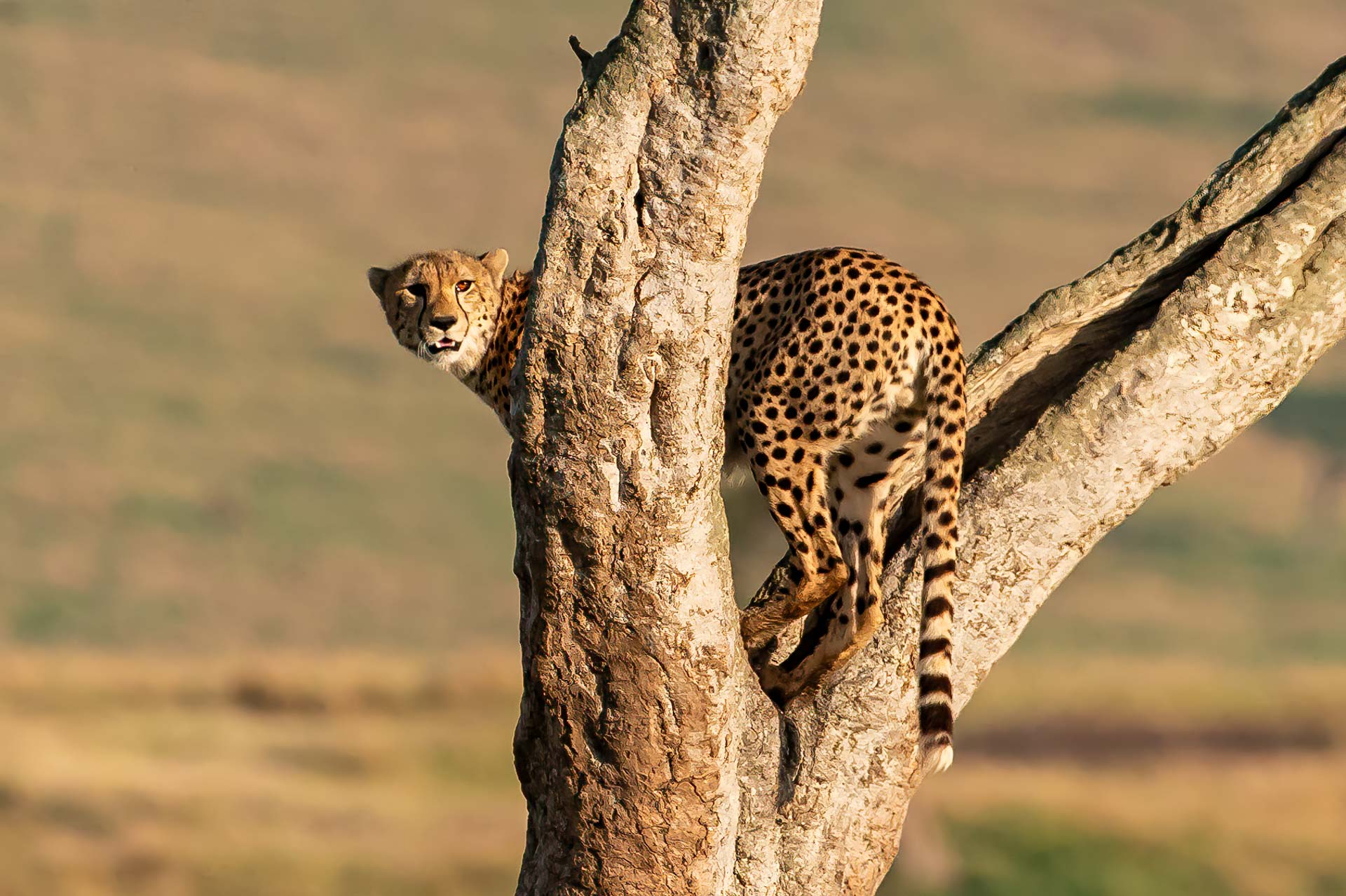

On the same morning, not far from Dirisha Campsite, (where Angama Safari Camp is currently pitched) we came across two of the Bila Shaka Boys. They had taken down a large buffalo and we watched as they fed, it looked like the kill might have been from the day before. It was early morning and they seemed to be eating fast but with so much food left, we thought they would be eating for a while so we proceeded towards the border.
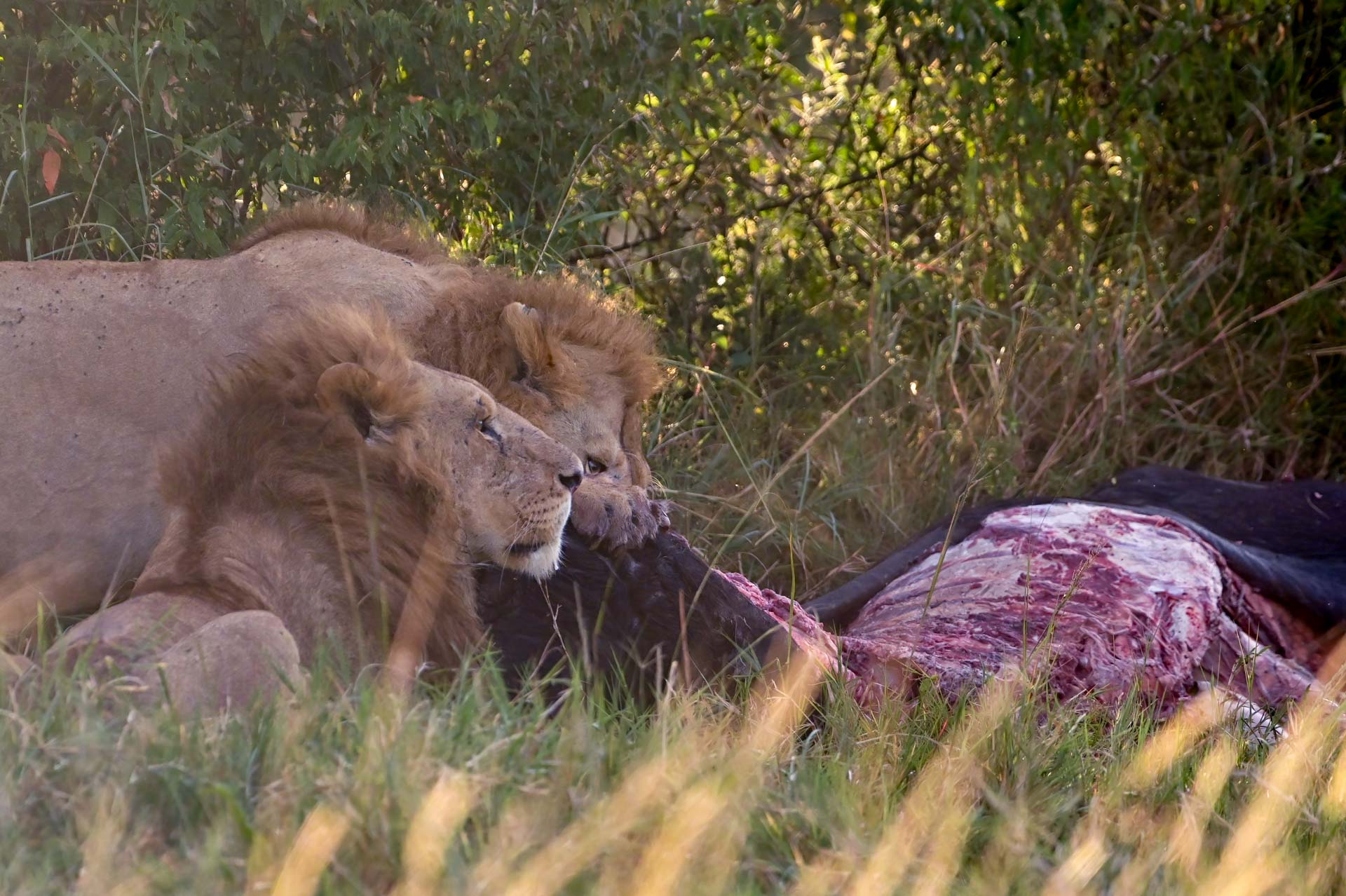
As we drove away, every few hundred meters we saw a hyena pop its head up through the long grass. When we came back only two hours later, the lions were nowhere to be seen and there were hyenas and vultures everywhere. Hundreds of scavengers were at the chaotic scene — we even spotted a rare white-headed vulture. Within hours, the carcass had significantly been reduced in size. We heard elephants in the forest near the Mara River and were told by other guides that the elephants were the ones that initially scared the lions away and then the patient scavengers took over. It is fascinating how many vultures and hyenas actually live in this area — only when they gather around a food source can you truly tell the scale of their numbers.
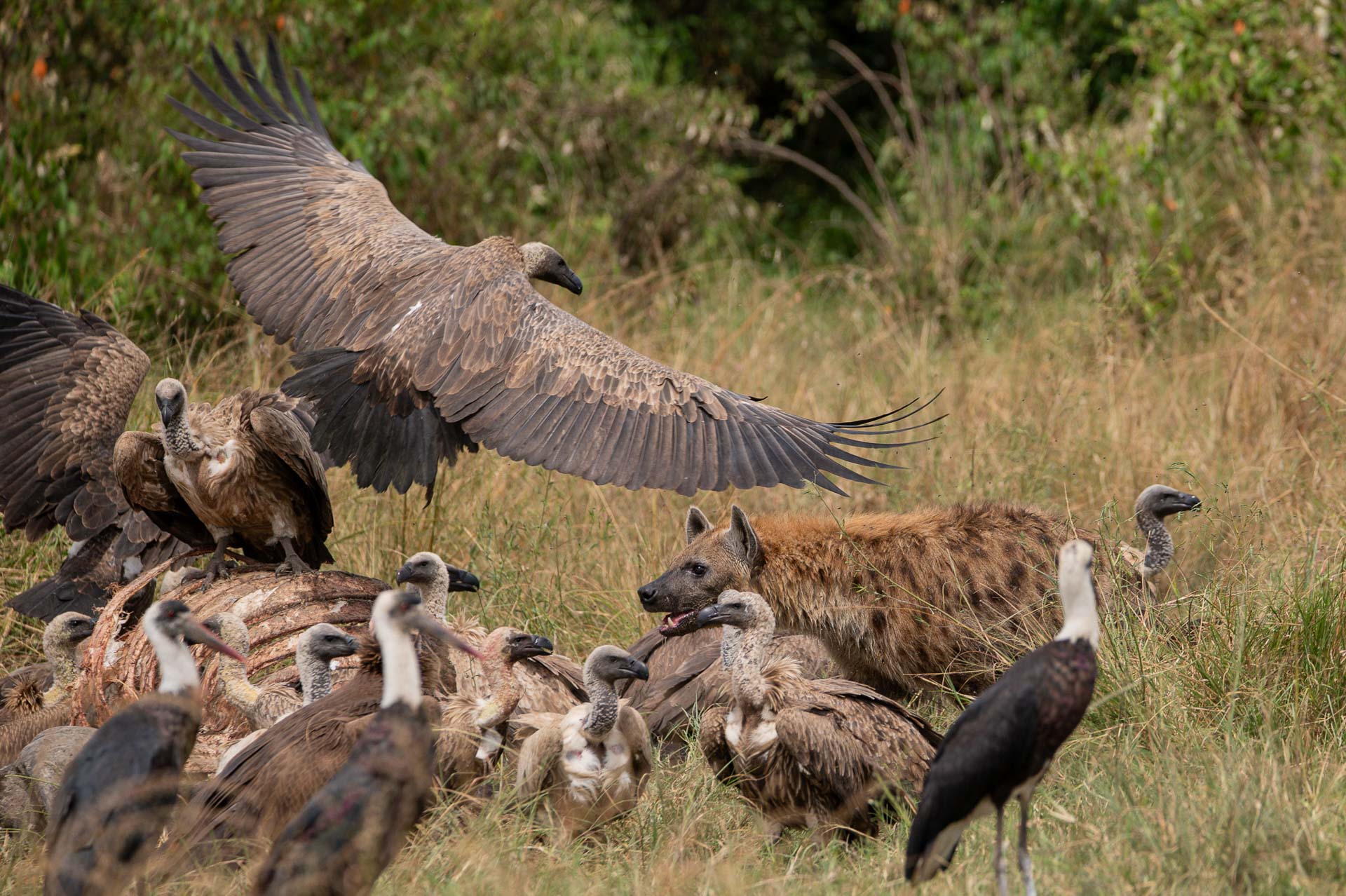


It is rare to see a monitor lizard in the wild — but to see two in one game drive is especially exciting. We stopped and watched one for several minutes; its movements were very few and very slow. It was mostly frozen like a statue in the process of thermoregulation. These animals are constantly searching for a balance between basking for warmth from the sun and staying active to forage for food. They can remain still for hours storing the heat to perform essential tasks like digestion and movement. The pattern and scales come together to create a rich tapestry of contrast and colour.
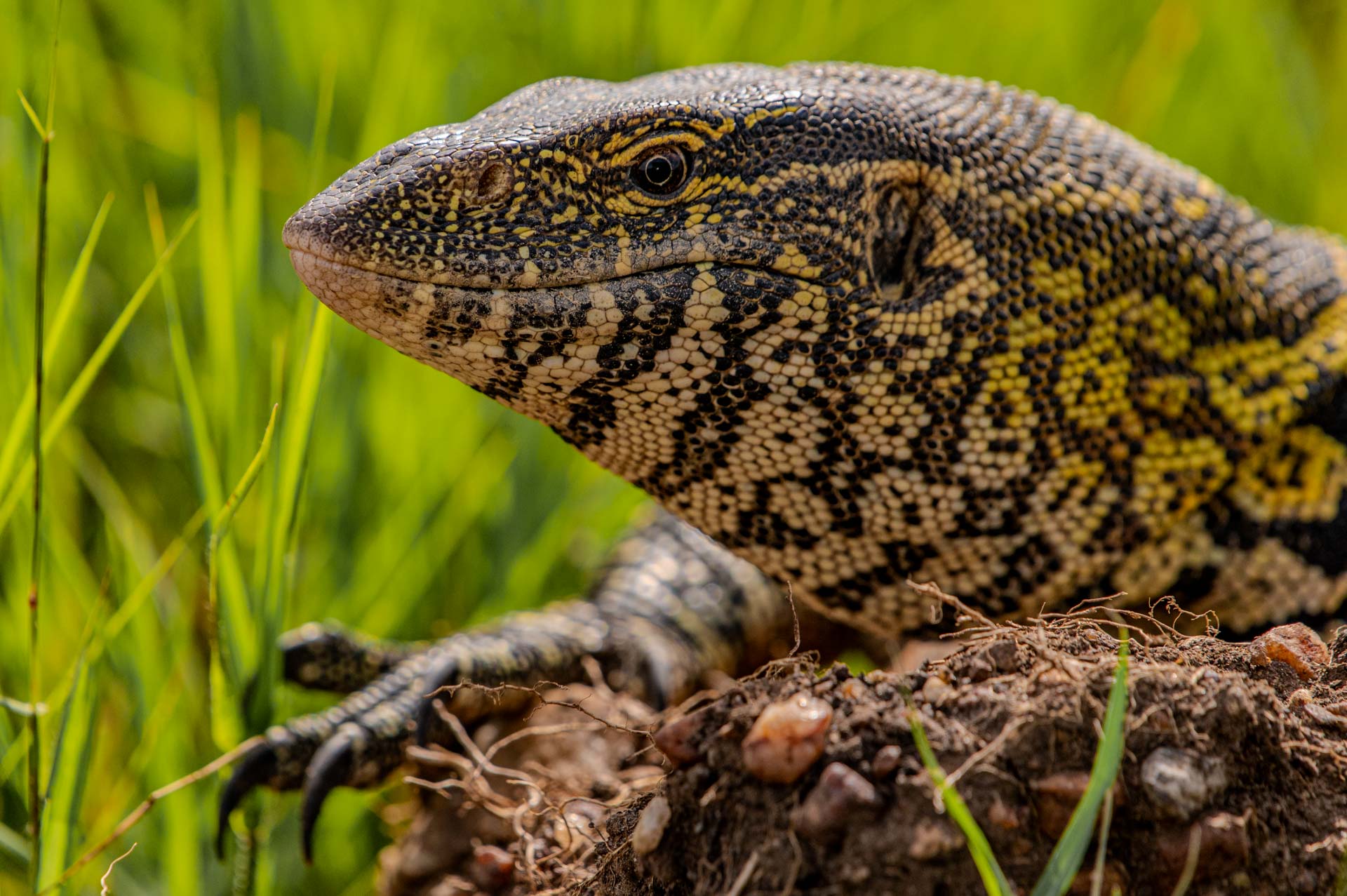
Here in the Mara, birds can get quite large. For the last few weeks, we have been watching a single grey crowned crane grow. Since the last time it was seen near Hippo Pools, it has almost doubled in size and it will continue to grow until it reaches maturity where it will be over one meter tall. Every time it has been seen, both parents have been close by. On the way to the border, we found a ground-dwelling kori bustard that can weigh almost 23 kilograms (50 pounds) earning it the title of heaviest species of flying bird. But the tallest (up to 2,7m) and heaviest (around 150kg) of them all, of course, is the ostrich which is numerous in the Mara.


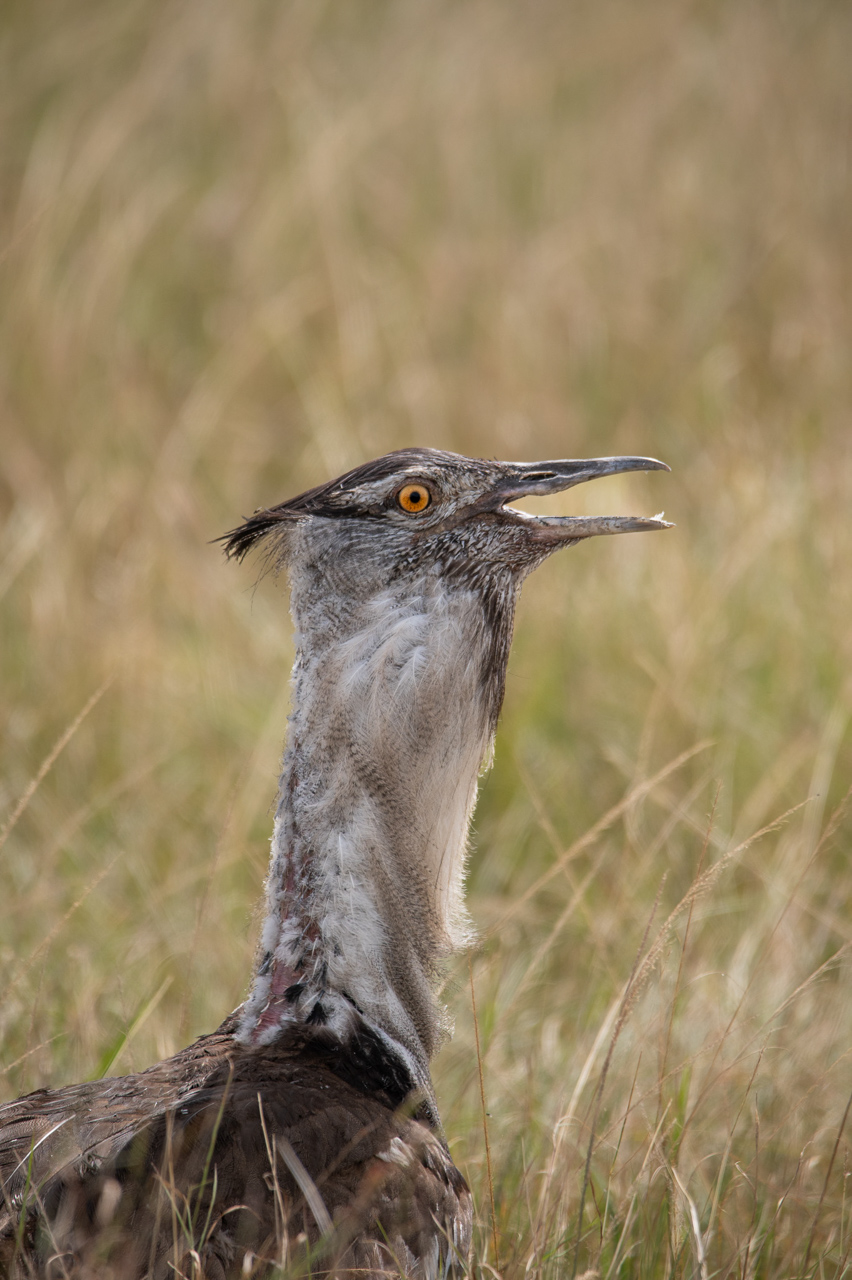

We continue to see the Mara Triangle management burn selected areas of the grassland to introduce re-growth and attract herbivores. We are quickly approaching the migration season and we eagerly anticipate the arrival of millions more animals. In the Mara, it can be thrilling to chase sightings but I truly enjoy the moments in between as well. The land itself is the main character in this saga of nature and plays host to all these wonderful animals.
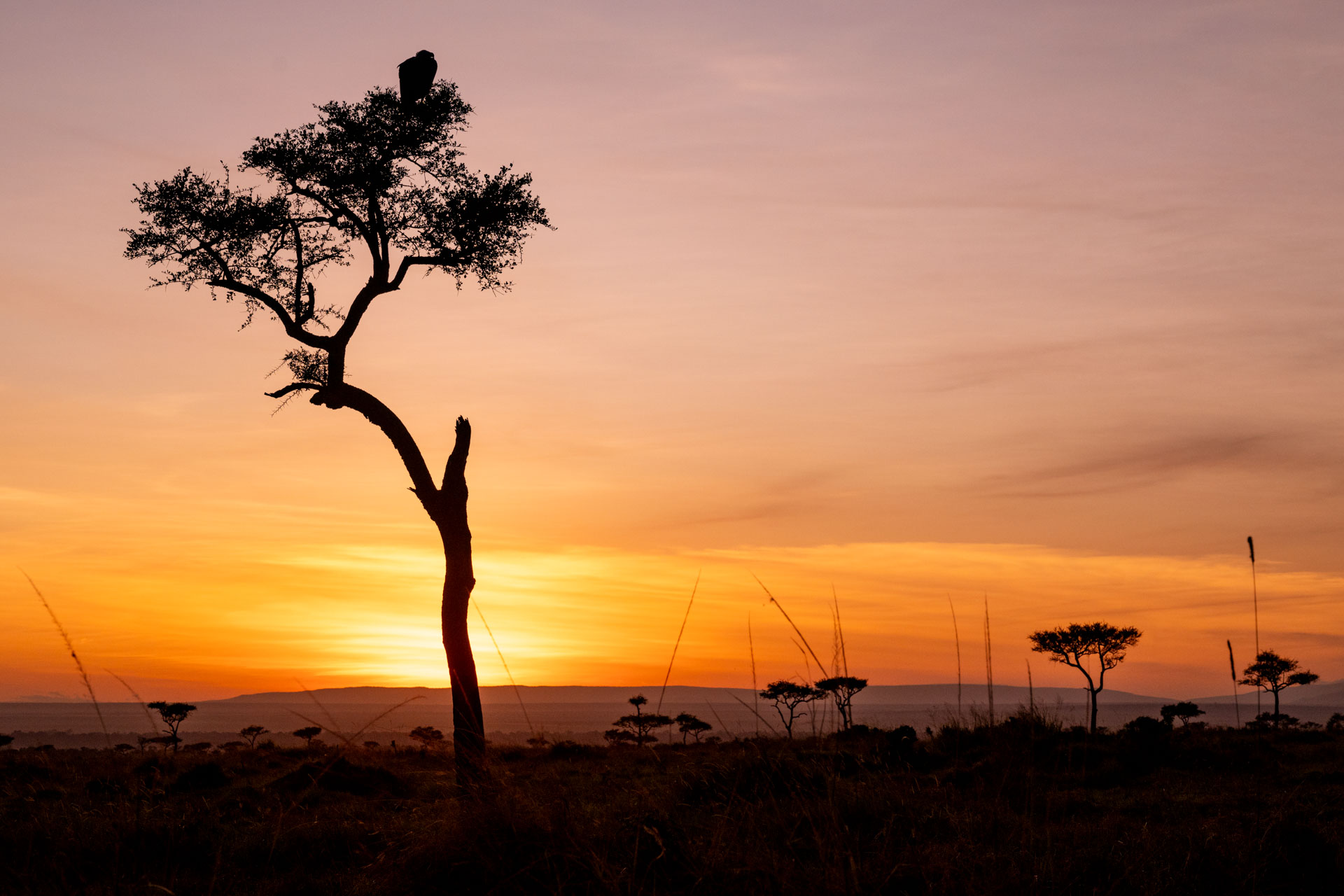
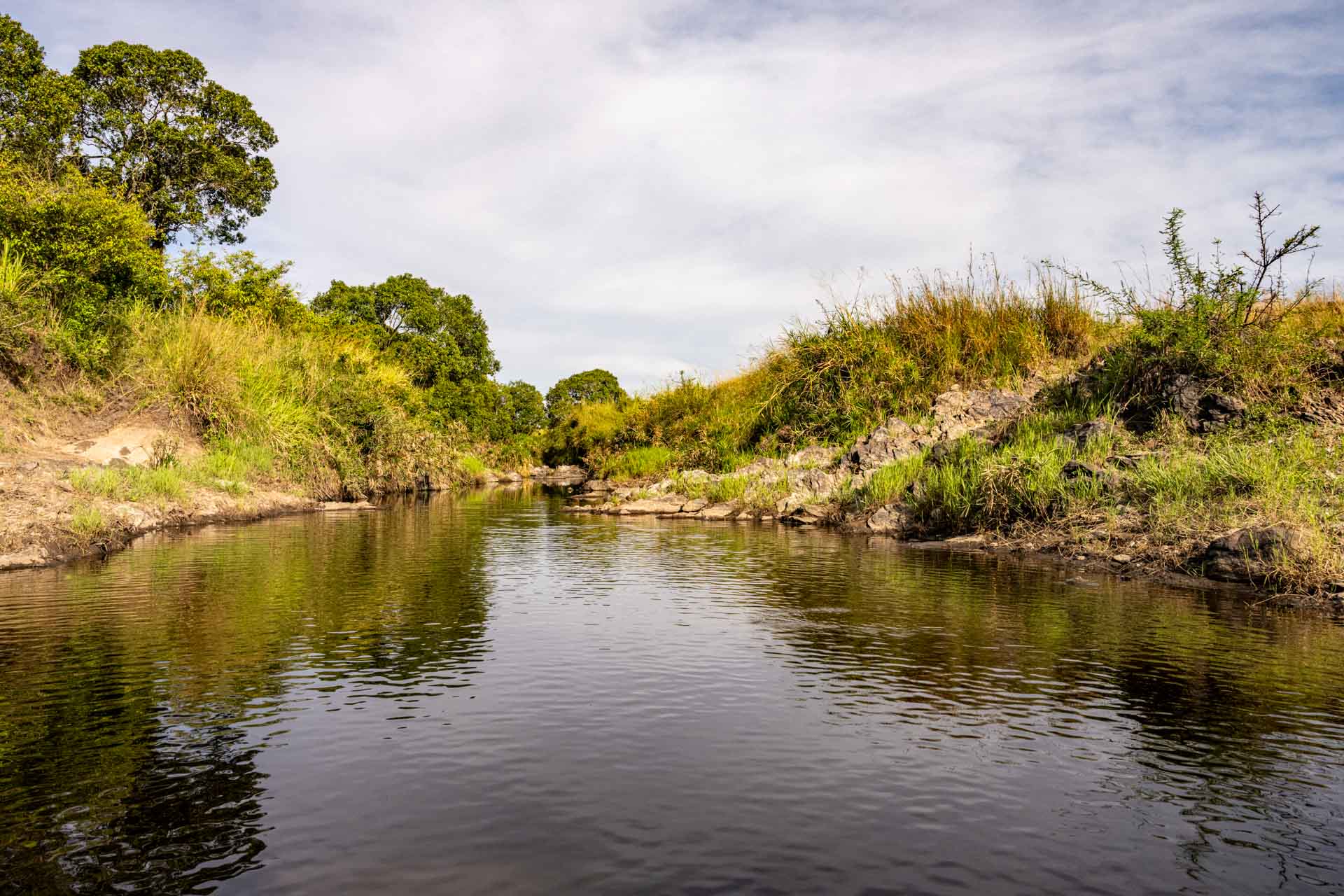
Angama guest, Isabel Roach, had an incredible sighting that truly showcased a safari's element of surprise. They had just stopped at the pond at Maji ya Ndege to watch a troop of baboons peacefully going about their business when the unexpected happened. Nobody knew it was there (guests, guides, even the baboon) but a crocodile lay perfectly still at the water's edge. Within the blink of an eye, like a bolt of lightning, the animal with the strongest bite force of any species snapped the baboon and took it into the water. After a few moments of struggle, the animal disappeared as its family looked on, visibly agitated with what just happened. –Andrew Andrawes
Let's go back about eight weeks ago to an exciting encounter we had here at Angama Amboseli. It was when we discovered a pair of majestic saddle-billed storks meticulously crafting their nest just 50 meters away from Guest Suite #9. Witnessing their journey from the inception of nest-building to the nurturing of their offspring throughout the breeding season has been nothing short of enthralling. From an aerial vantage point, we've had the privilege of observing the intricate details of their captivating life cycle —and have now successfully hatched four beautiful chicks.
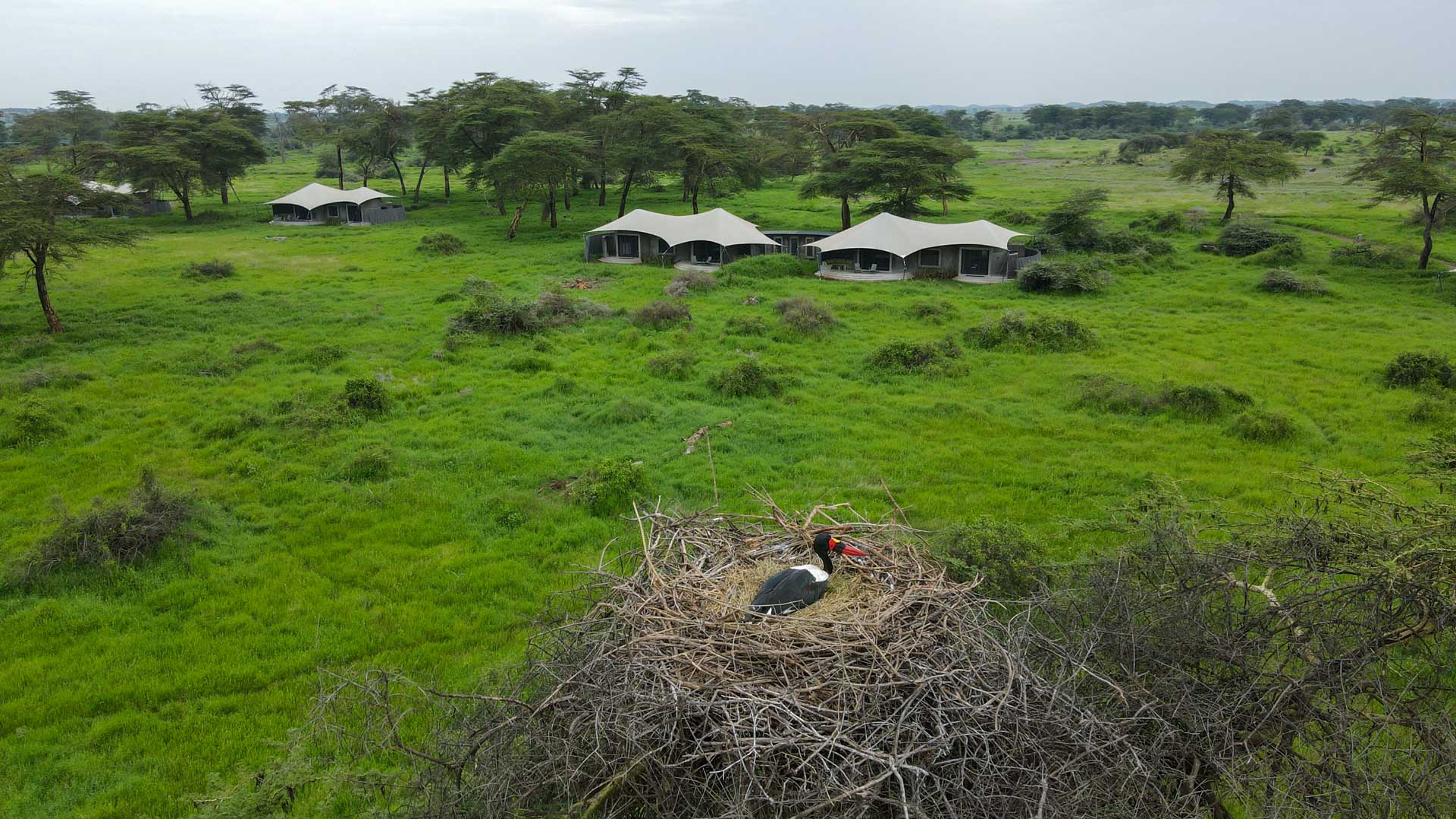
Feeding primarily on fish but also indulging in frogs, reptiles, mammals and even insects, saddle-billed storks inhabit tropical sub-Saharan regions of Africa. Their favourite habitats are near water sources in open or semi-arid landscapes. These storks are predominantly solitary creatures and will generally hunt alone, while nesting pairs staking out their territories fiercely, often driving away intruders. Despite their usual shyness, these storks display a remarkable tolerance in Kimana Sanctuary, as evidenced by their choice of nesting just a stone's throw away from Guest Suite 9. What a splendid sight!

While their eggs and chicks may be vulnerable to predators, the adults are fierce defenders, taking turns to safeguard their offspring tirelessly. This cooperative effort significantly enhances the chances of their young ones' survival. Bonded for life, saddle-billed stork pairs meticulously construct their nests atop sturdy platforms of sticks, often nestled in the protective embrace of thorny acacias near water sources. Together, they diligently tend to their brood, with females typically laying one to five eggs, though two to three is more common. Incubation lasts approximately 30 to 35 days, during which time both parents take turns sitting on the eggs.
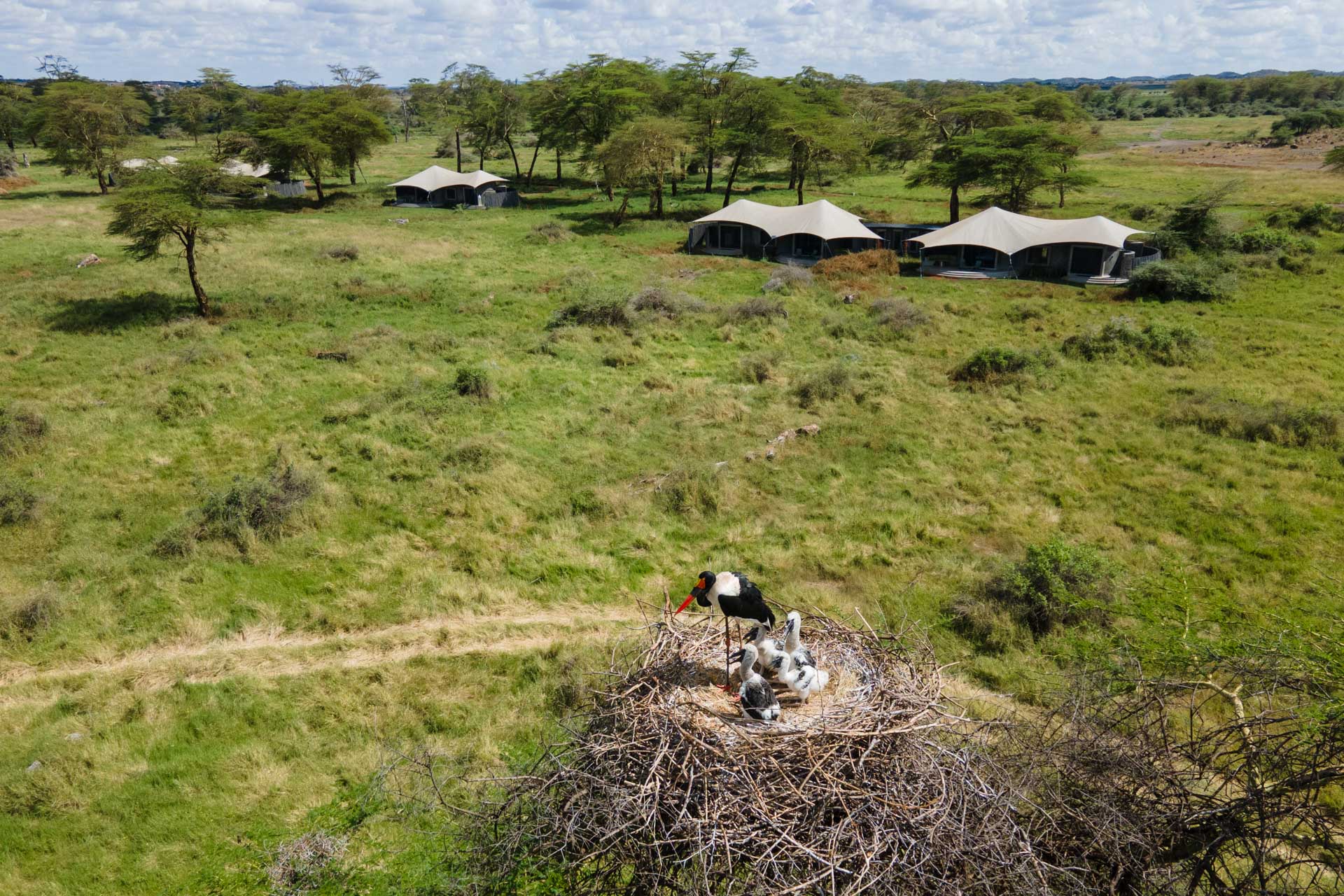
Barsaloi, a magnificent bull elephant reigning over the Amboseli region, recently journeyed into Kimana Sanctuary from Amboseli National Park via the critical animal migratory corridor. This corridor serves as a lifeline not only for Barsaloi and his kind but also for countless other species migrating across the expansive Amboseli ecosystem in search of food and water.
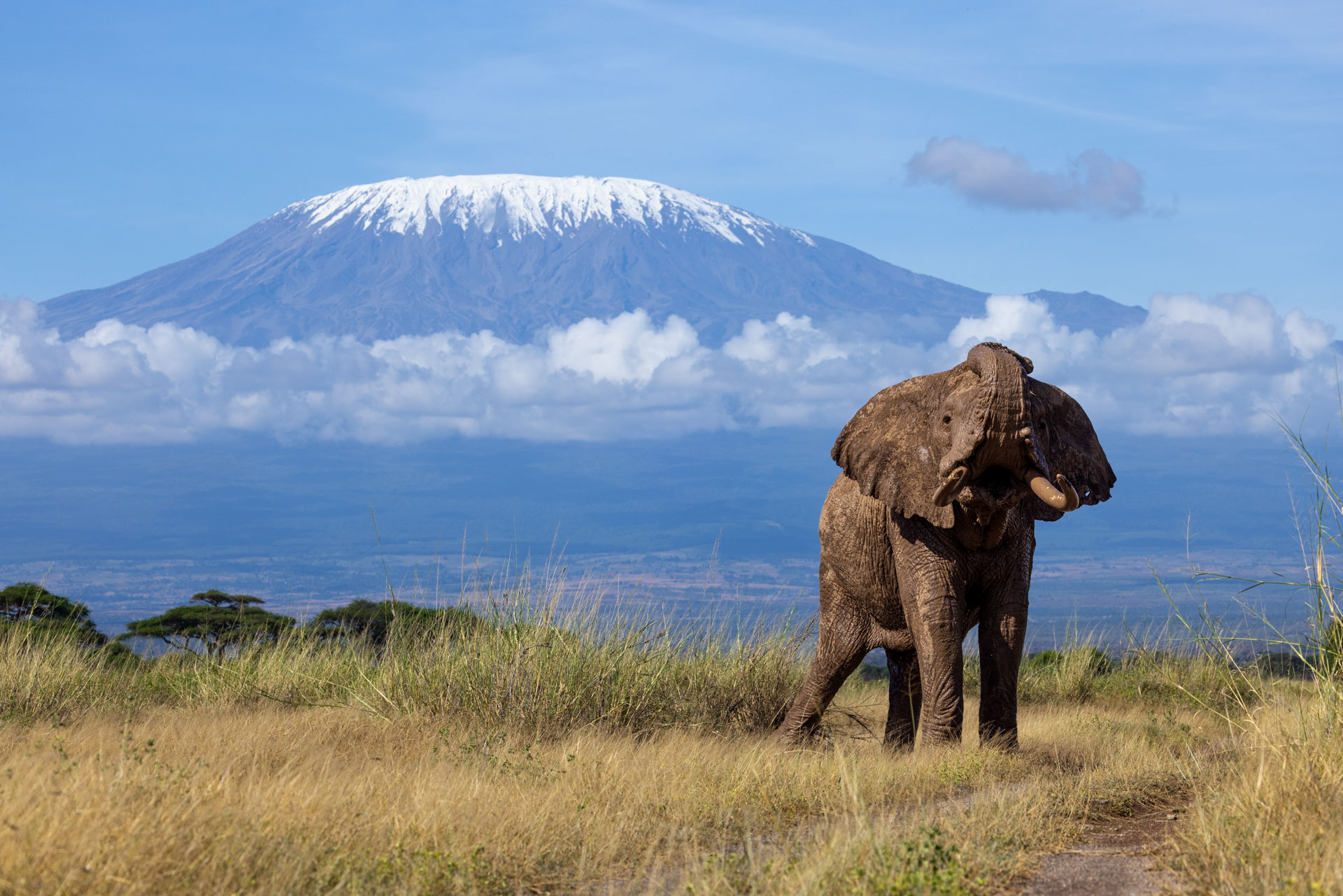
At 37 years old, Barsaloi is currently in his prime — a bull at the peak of his reproductive age. He appeared slightly on edge, with urine dribbling down his leg: a clear indication that he is currently in musth. During this period, bull elephants in heat would typically be solitary, seeking females to mate with and traversing the landscape until their reproductive needs are met. We observed him engaging in a fervent bathing session, a desperate attempt to seek respite from the scorching mid-morning sun. However, even this vigorous activity couldn't entirely alleviate his discomfort. Moments later, Barsaloi sought refuge under a beautiful tortilis tree as the sun’s intensity increased, and we left him to enjoy the shade.
A recent encounter with vultures provided me with an intriguing insight into these scavengers' feeding behaviours. Not far from the lodge, I noticed a cluster of vultures gathered as if feasting on something. Curiosity piqued, I ventured closer to investigate. What I discovered was both fascinating and perplexing — it was a weathered carcass, likely several months old, its flesh long gone, leaving behind nothing but bare bones.
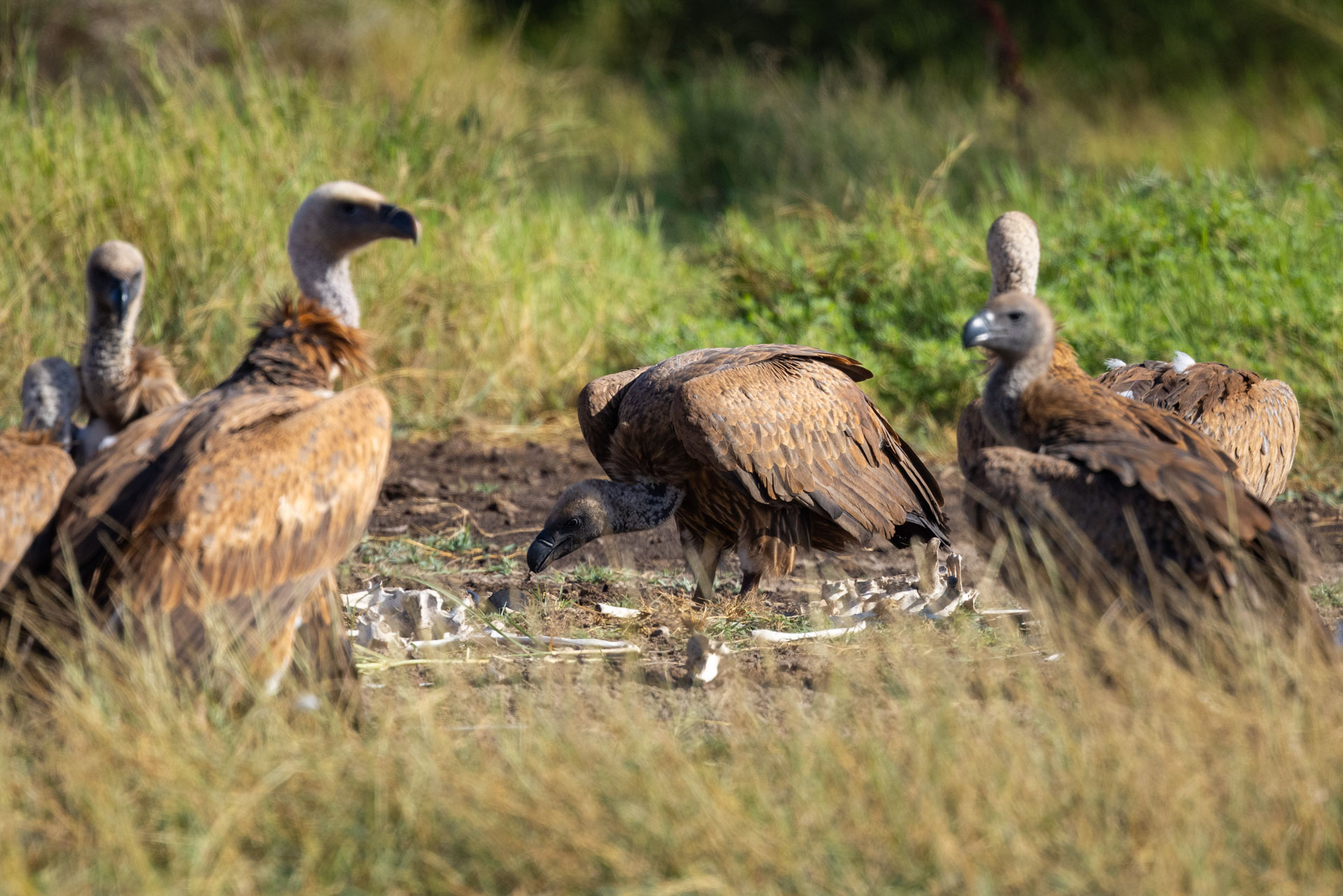
Luckily I was with Salaash, a knowledgeable Angama Guide, who laughed at my astonishment. How could these birds be feeding on what seemed like a skeletal relic? Salaash, with a twinkle in his eye, enlightened me; he explained that recent rains had played a pivotal role in this unpleasant buffet. The water, seeping into the carcass, had softened the once-dry ligaments and remnants of skin, making them palatable to the vultures. Truly savage, in every sense of the word.
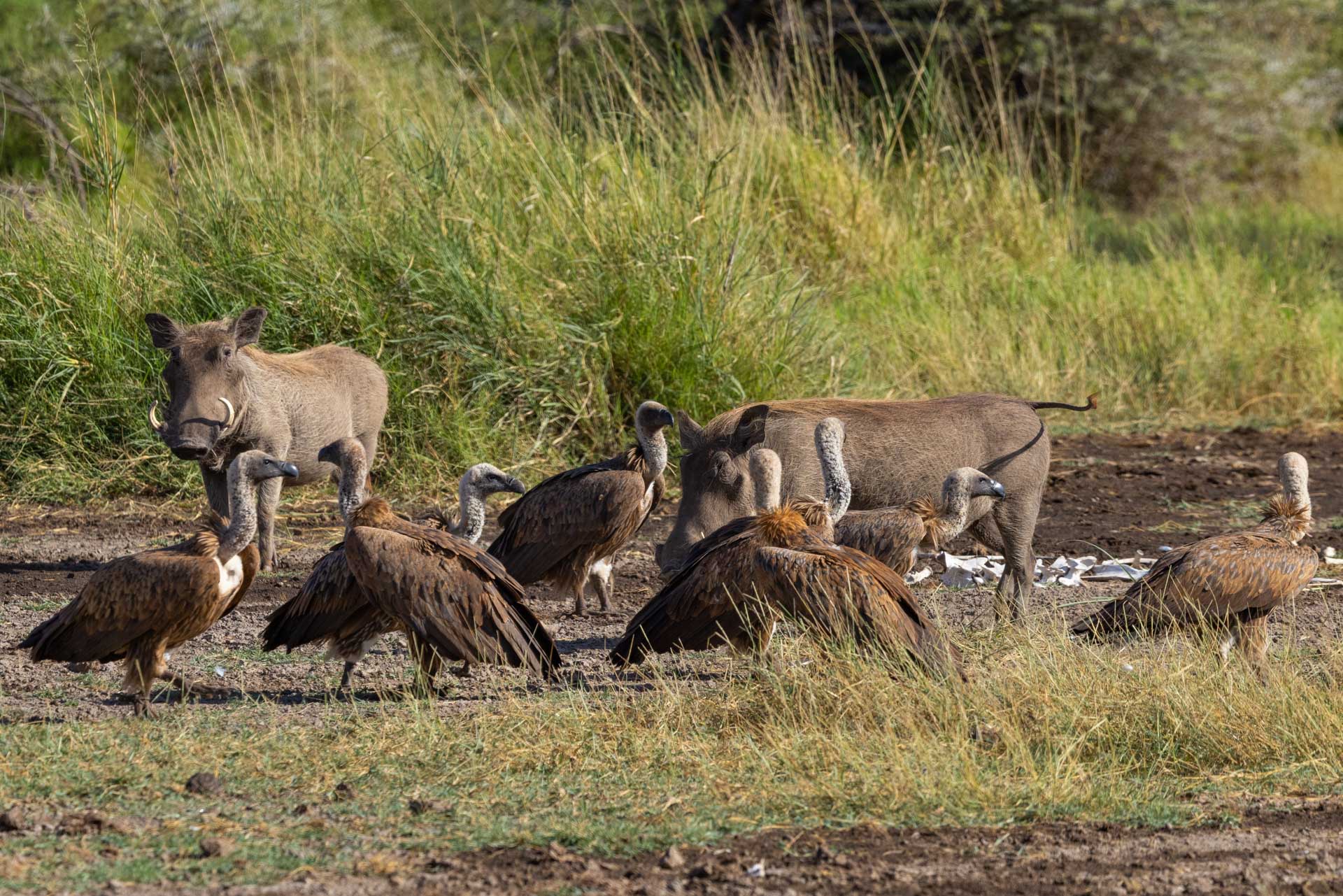
As I absorbed this newfound knowledge, the scene before us took on an added layer of complexity. Amidst the vultures, a group of warthogs ambled in, likely drawn by the commotion and the promise of a meal. Yet, their enthusiasm quickly waned as they realised that what lay before them were mere bones — a feast for the vultures, but of little interest to them. In that moment, amidst nature's theatre of life and death, I couldn't help but marvel at the intricacies of the natural world and the remarkable adaptations of its inhabitants. It was a reminder that even in the most unexpected encounters, there lies a wealth of wisdom waiting to be discovered. –Sammy Njoroge

Filed under: This Week at Angama
Subscribe for Weekly Stories
Comments (0):
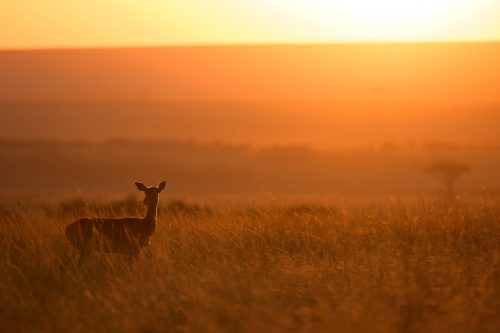
Rates & Availability